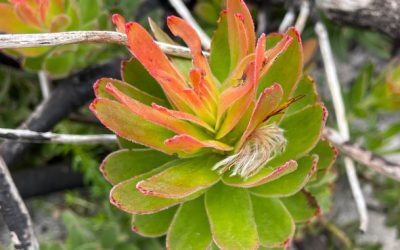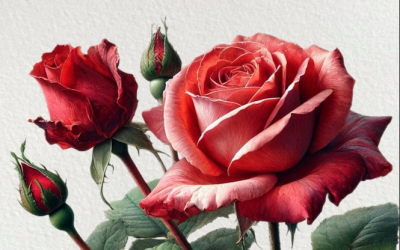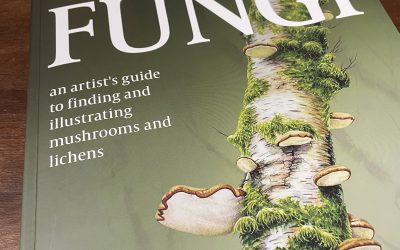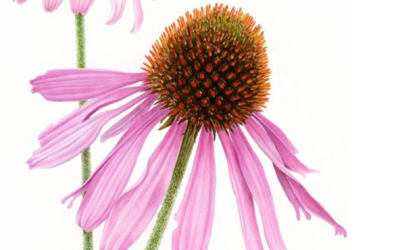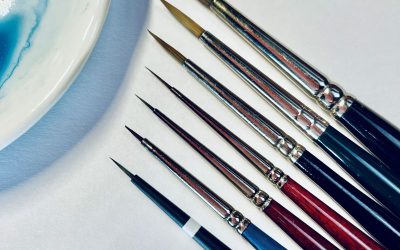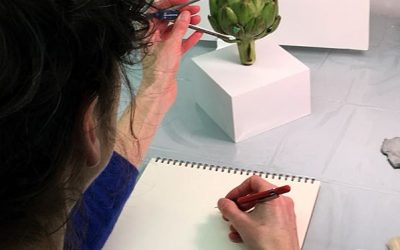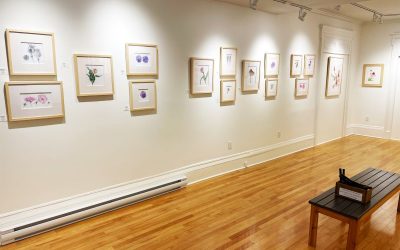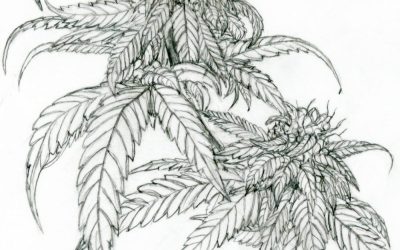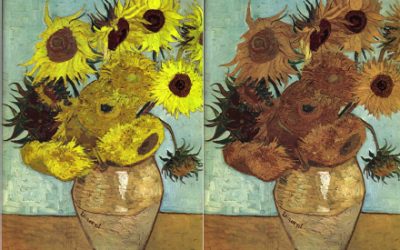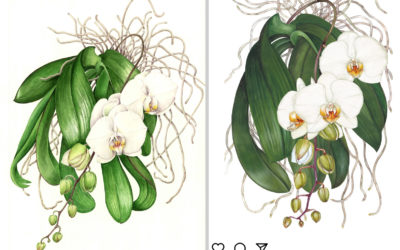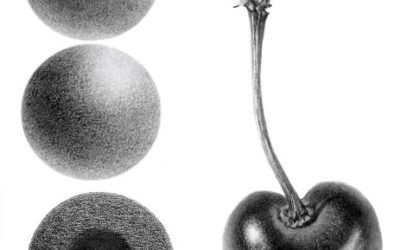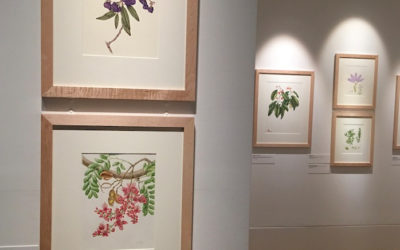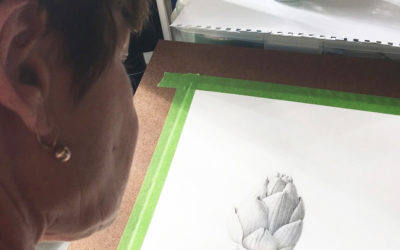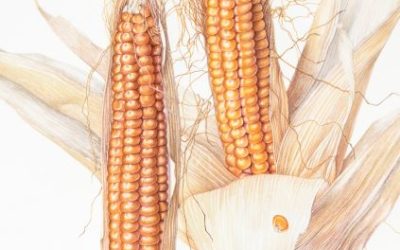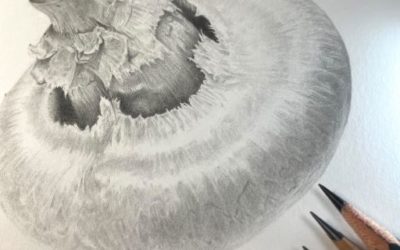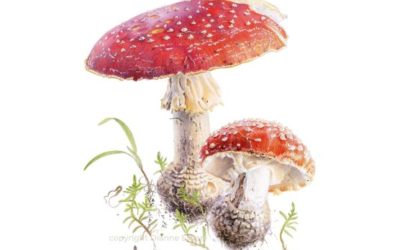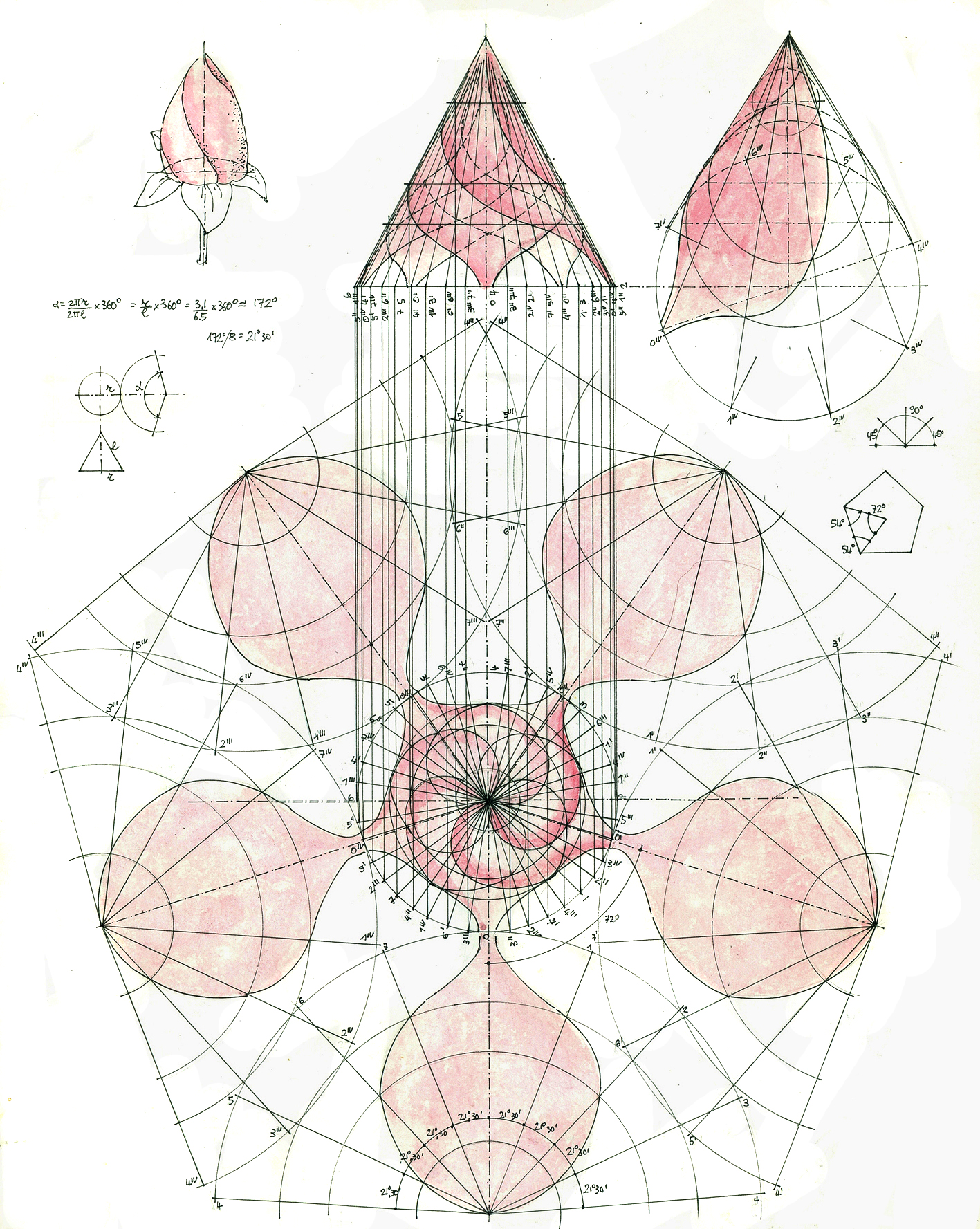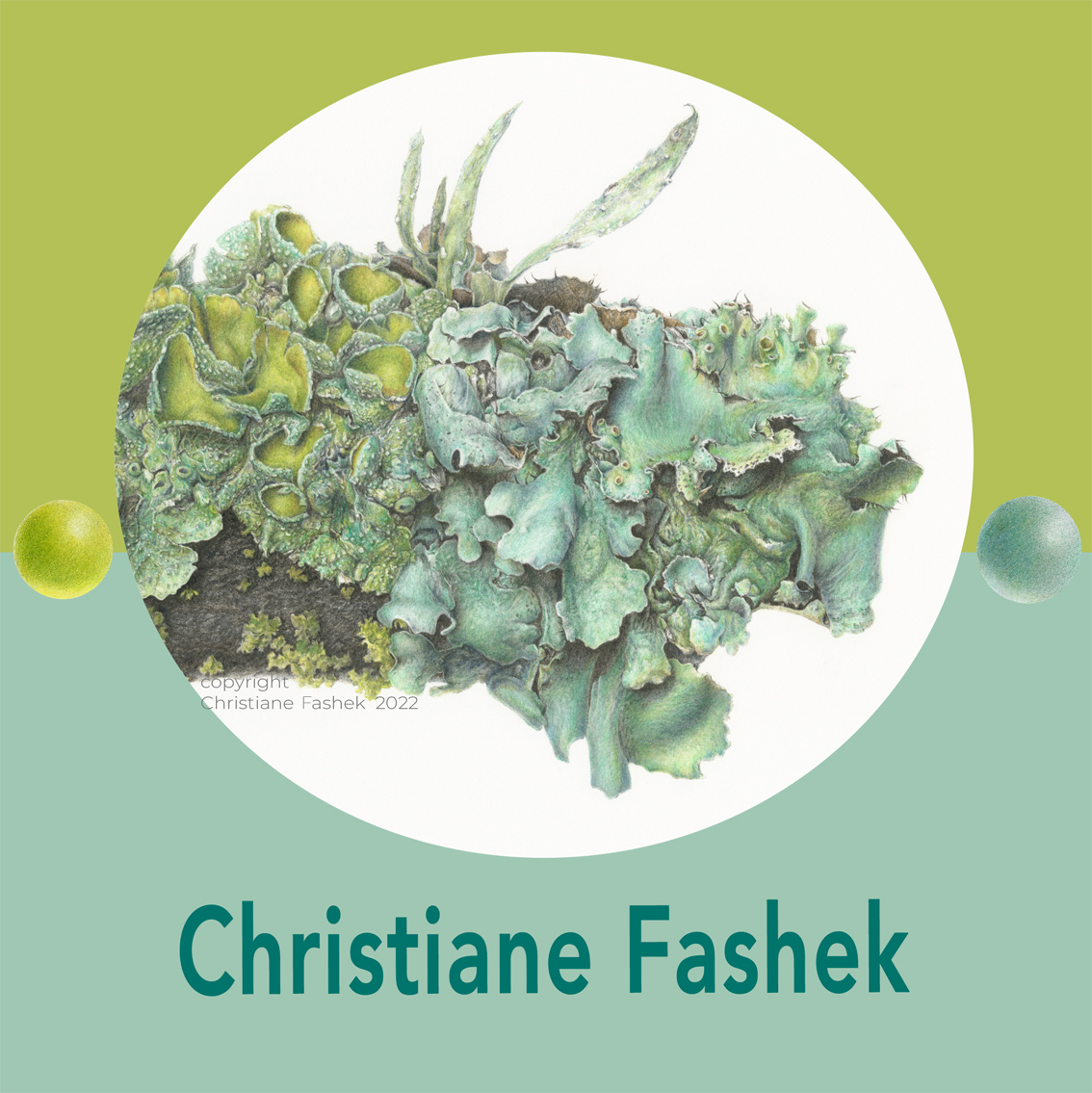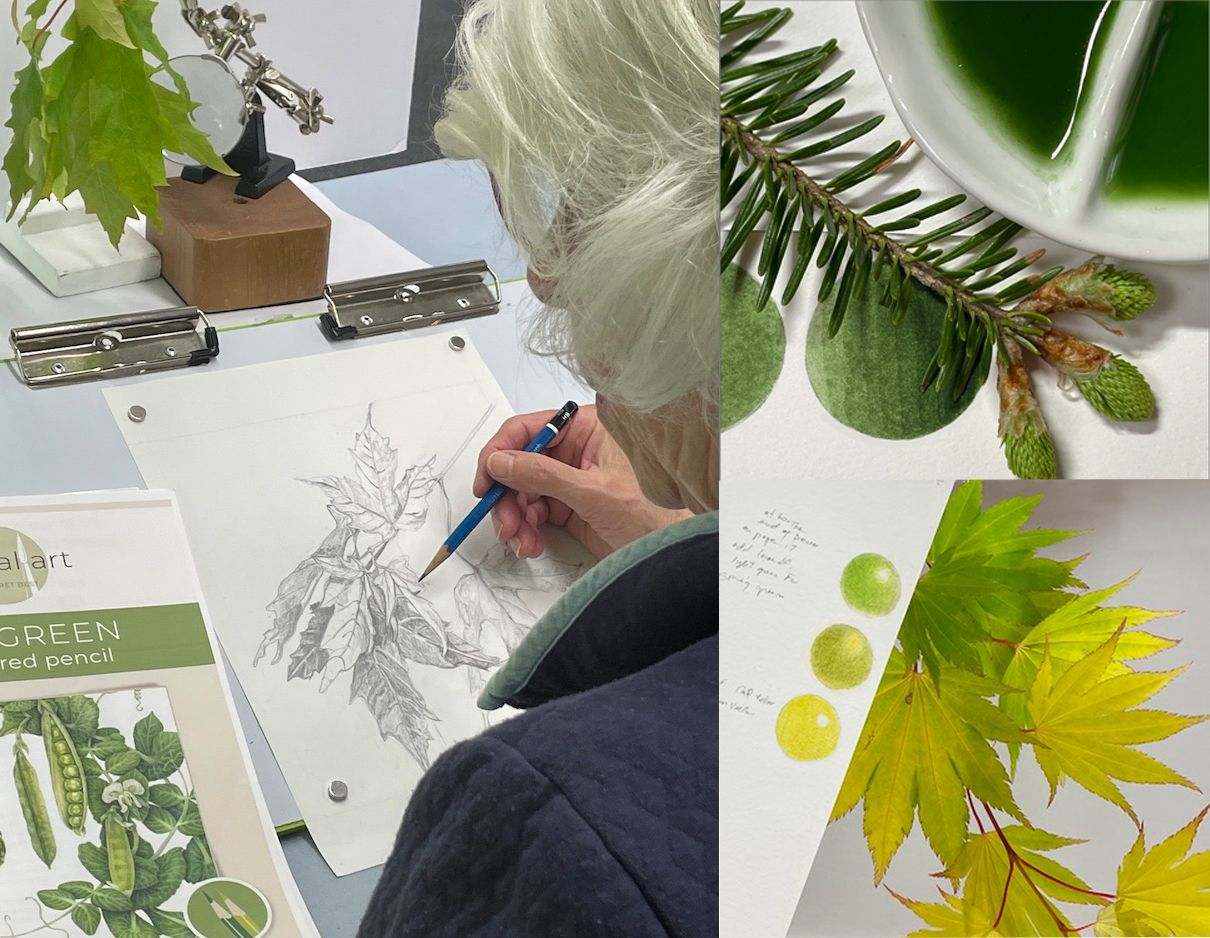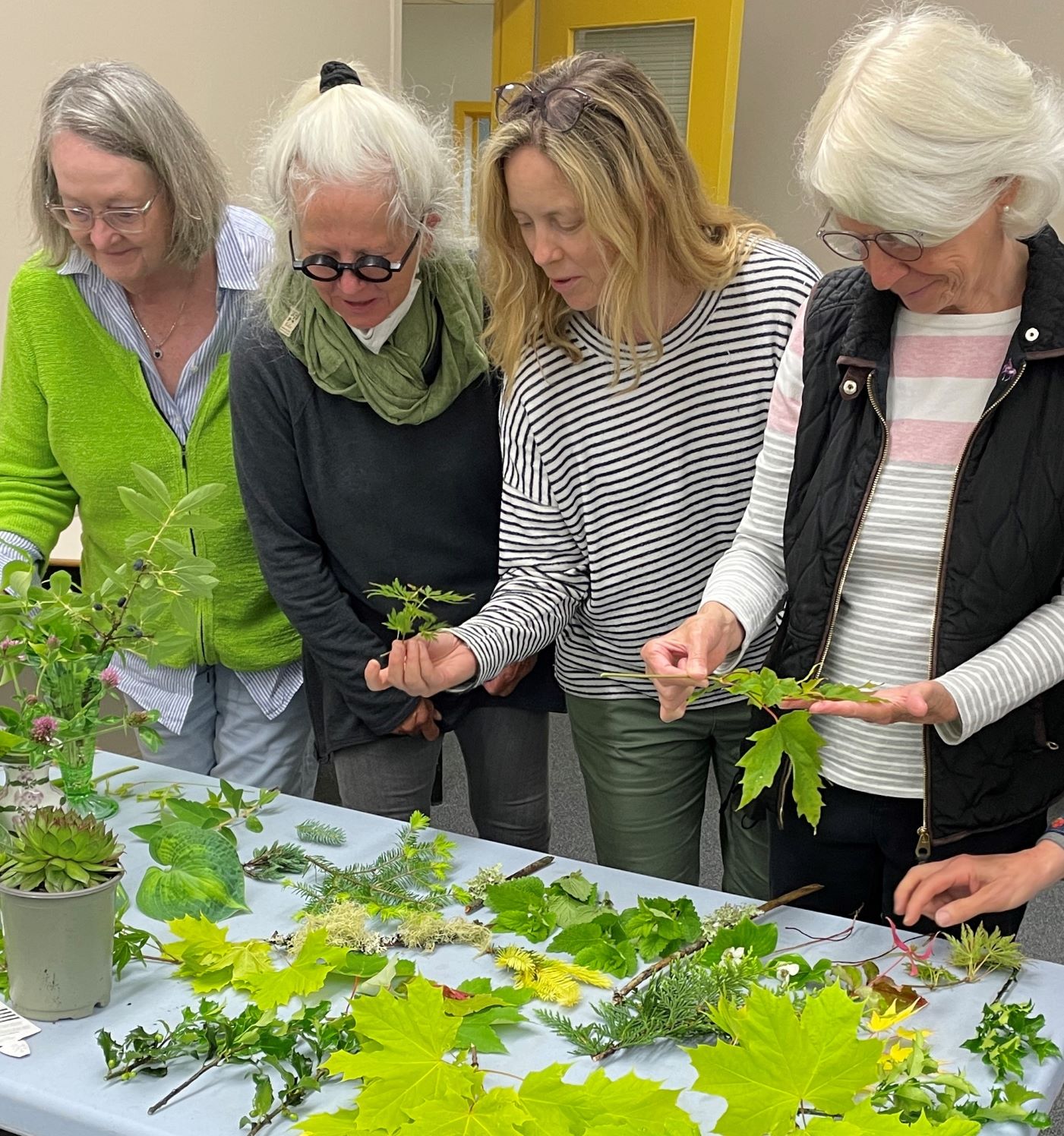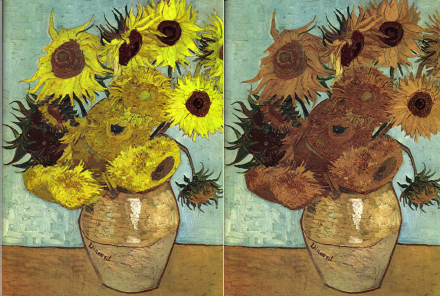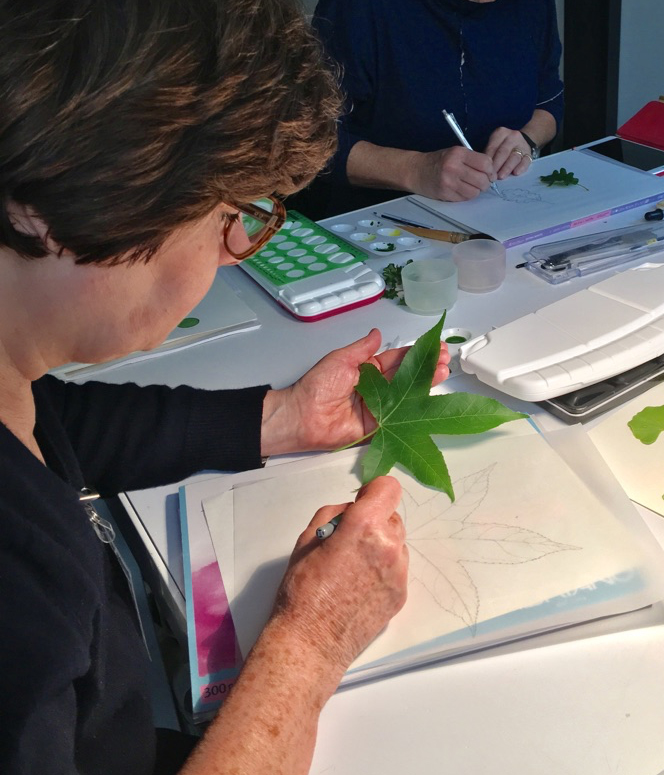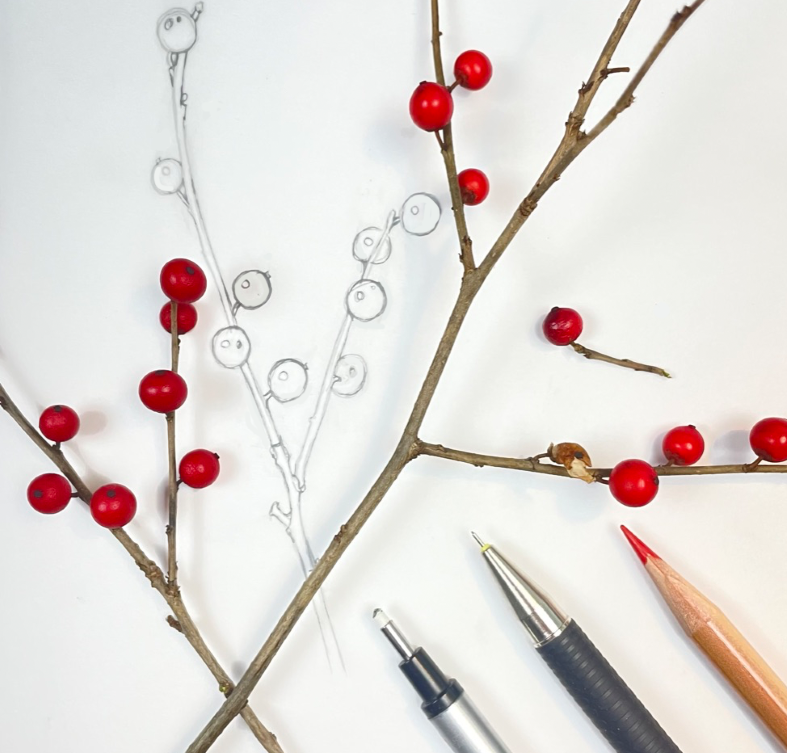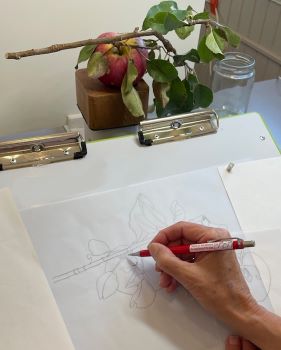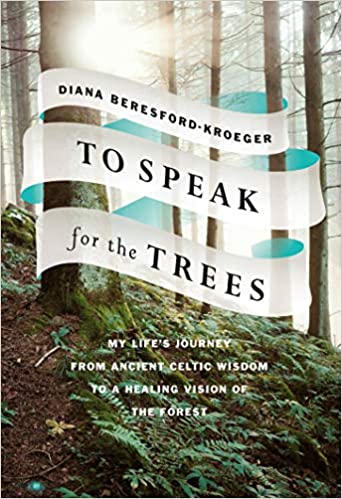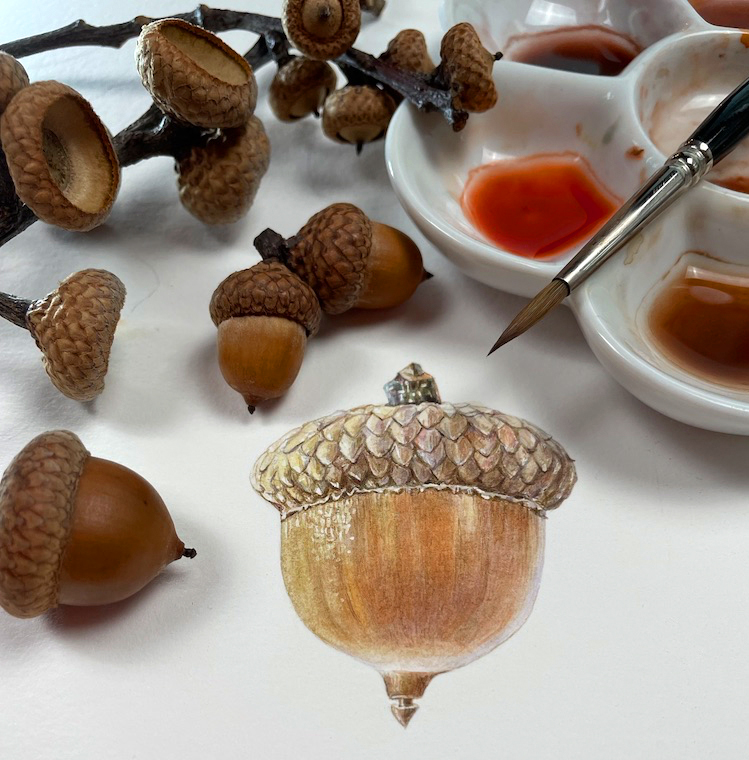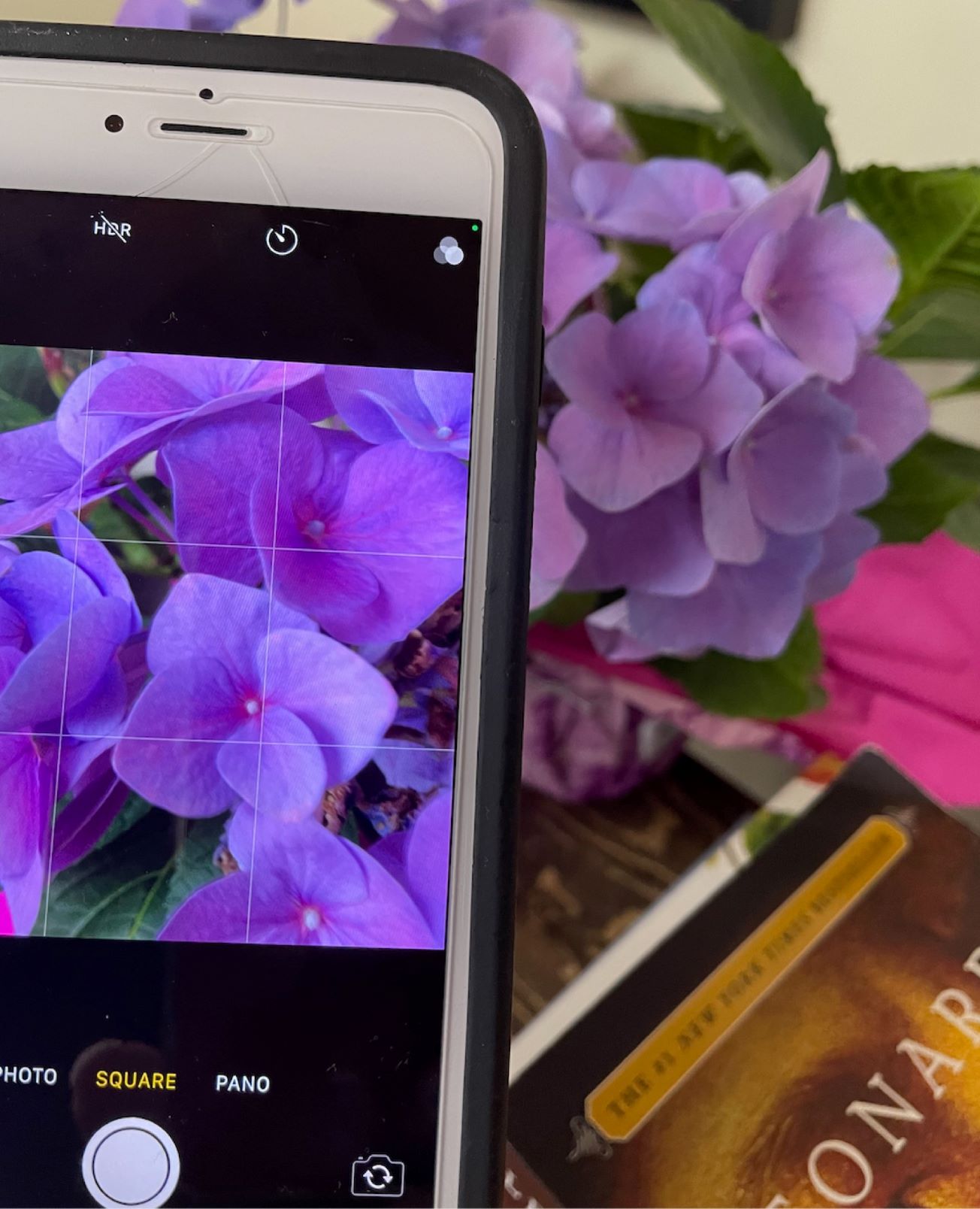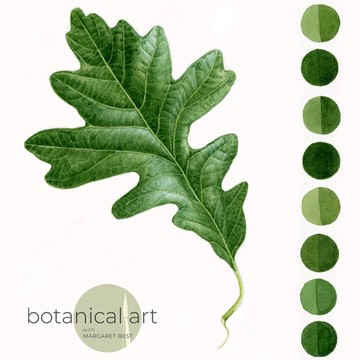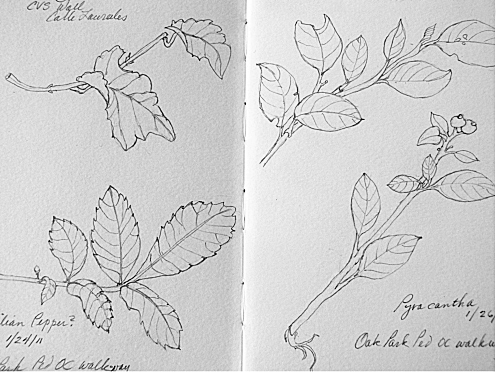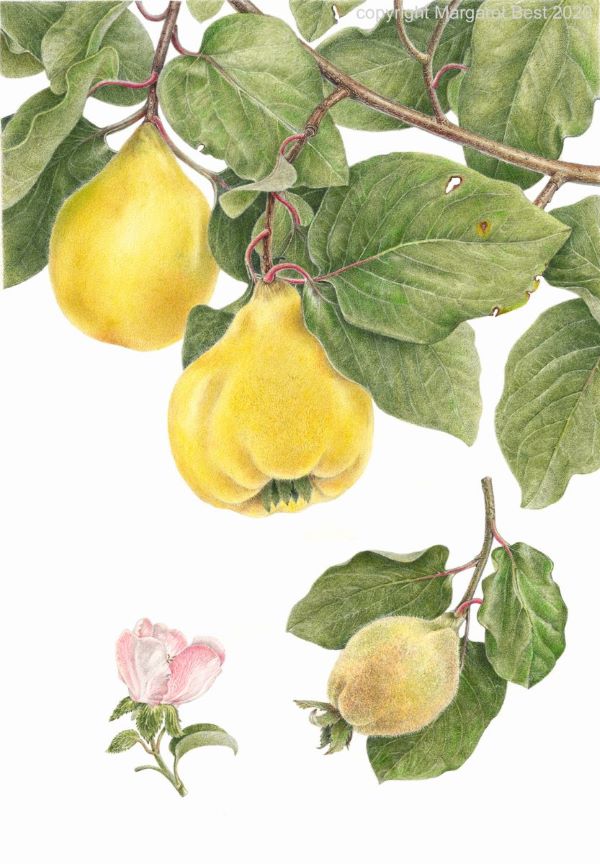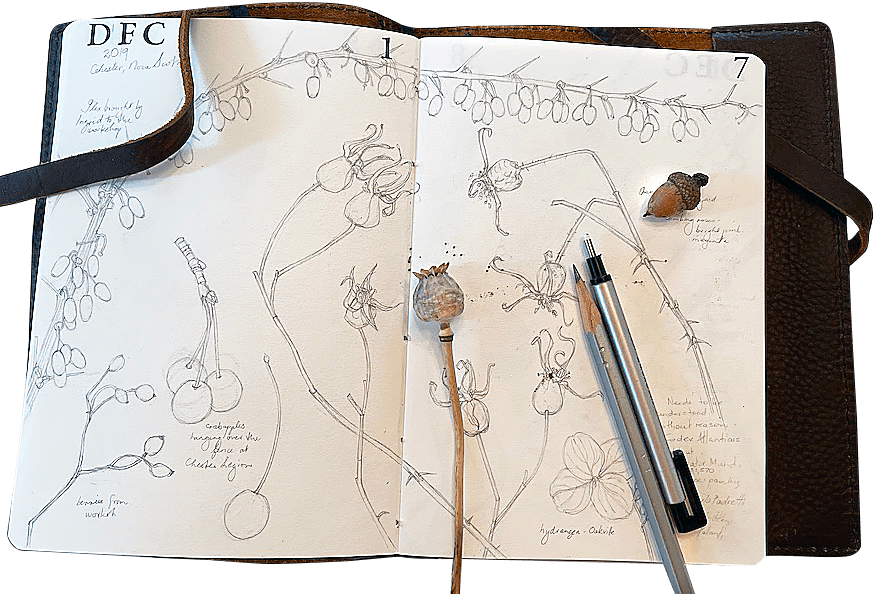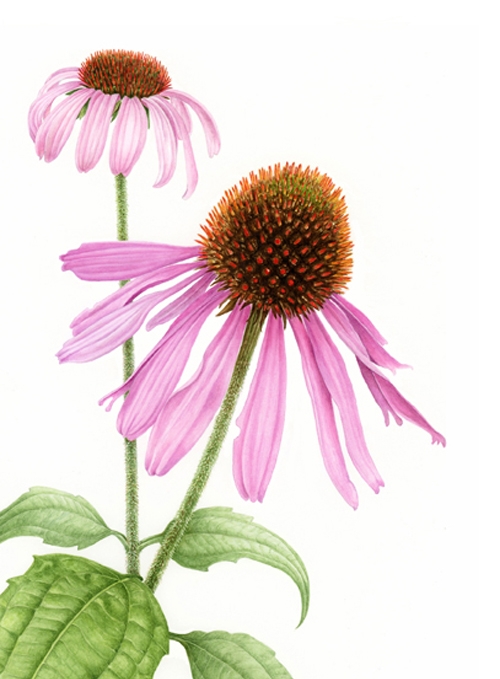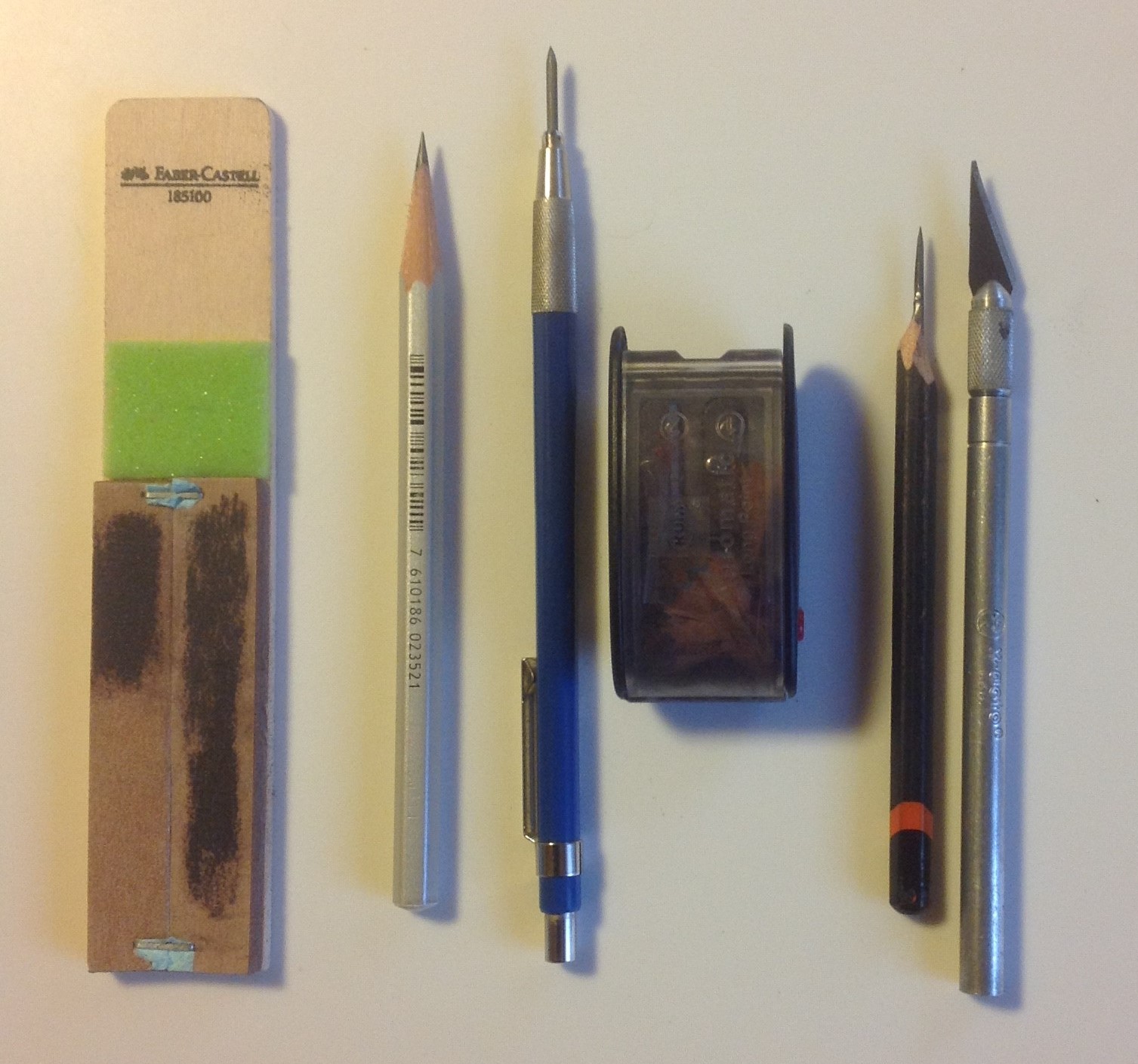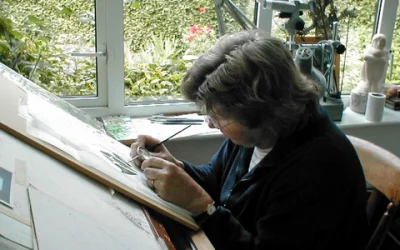Viewpoint — (not your usual blog)
This is my botanical art blog. Here you will find posts on technical and administrative topics of interest to botanical artists. Please feel free to comment or drop me a line via my Contact page. If you’d like to know more about my work please visit my portfolio site.
Renewal rising from the ashes
I’ve been offline for almost all of December while visiting the Western Cape region of South Africa; a special place that was once my home. One purpose of our trip was to attend an important family celebration. But it was also an opportunity to enjoy a much-needed...
An apparent AI fraudster targets a botanical art group.
This past week botanical artists received a warning about how seedy the seedy side of social media can be, especially since the advent of Artificial Intelligence (AI). I was visiting the Botanical Art for Coloured Pencil group on Facebook, when a new post caught my...
Compositions beyond a camera’s capability
When my first e-booklet on composition was released, I promised another would follow. As I mentioned at the time, a single, thirty-page booklet could not possibly cover all that had to be said about such a comprehensive subject. The first booklet addressed the...
How to get the most out of my instructional botanical art e-booklets
I’m quite frequently asked if it’s okay to print a copy of my e-booklets, and my answer is always the same: “Of course it is!” Just because the booklets are delivered digitally as convenient, easy-to-navigate, interactive e-booklets doesn’t mean that you can’t print...
Biased jury decisions? Problem solved!
Suggestions of bias are common in significant juried botanical art exhibitions. I hear them all the time. While sometimes it might just be sour grapes, other times the allegations of bias are hard to dismiss, particularly when the exhibition organizers seemingly make...
The Transylvania School of Botanic Art & Illustration
For nine consecutive years before moving to Nova Scotia, I taught workshops in one of the world’s recognized wildflower sanctuaries, the Waterton Lakes region in Southern Alberta. In late Spring and early summer, the grassland areas are home to over 400 plant species....
An amazing new botanical art book on painting fungi
Today I was delighted to receive my copy of Claire Ward’s just-released book, Drawing and Painting Fungi - an artist’s guide to finding and illustrating mushrooms and lichens. And I was impressed to see my two contributions beautifully presented along with those of...
Are digital thieves ripping off your paintings too?
Last week, purely by chance while conducting a Google search, I discovered that my Echinacea purpurea had been “stolen” by three clipart services and was being offered as a free high-resolution download. Further inquiries revealed that other botanical artists had...
Resolutions and goals
It’s the first week of the new year and, predictably, there’s all the usual talk about resolutions. However, resolutions are just a statement of intent; without specific goals to give effect to the resolutions, intent is unlikely to be implemented. For example, in a...
Technique confusion . . . What is it and do you suffer from it?
A student recently told me that she thought that she and some fellow botanical artists in her group were suffering from “technique confusion.” She defined technique confusion as too many teachers with too many techniques and no one apparently able to address anything...
My point about the all-important point
I teach three mediums: graphite; coloured pencil; and watercolour. While they have their obvious differences in technique application and material content, they have one essential aspect in common—the point. In all three of these mediums you simply cannot produce...
Botanical art as therapy
In today's fast-paced world, where the demands of modern life often leave us feeling overwhelmed and stressed, finding moments of tranquility and peace can be a challenging endeavor. Fortunately, we have botanical art. Because botanical art focuses on the precise and...
How to price a botanical painting?
How to price a painting has always posed difficulties for botanical artists. Unfortunately, there is no magic formula. In fact, just like botanical art itself, pricing botanical art is a combination of art and science. I had to wrestle with this issue again recently...
Unplug and paint
I recently received an email from a friend and fellow botanical artist in which she said that she had become so distressed and disgusted at the political news currently on the airwaves, that she’d decided that painting was to be her sanctuary. She called it “unplug...
Every painting has a story to tell
Recently, in the process of painting the walls of our dining room, living room, and my studio, we had to take down and then rehang the many paintings we’ve collected over the years—most of them botanical art originals. In handling them, it dawned on me that every one...
Don’t fall in love with a fugitive
Fugitive watercolour pigments (those are the ones that can change colour or even fade away completely) can be very seductive. Some are easy to fall in love with. Take Opera Rose, for example. It came up on a social media post this past week and since discussion on...
Copying. When is close too close?
Today I was scrolling through botanical art posts on Instagram when I felt the kind of spine-tingling sensation described by people who believe they’ve seen a ghost. I was looking at a painting of a white phalaenopsis orchid that appeared to be one I’d completed about...
To blend or not to blend? That’s the pencil question.
A recent article by Robert McKinley on www.artistsnetwork.com addressing the topic of blending on paper (or canvas) to merge value transitions, caught my attention. And it’s not just because he references Leonardo da Vinci’s famous ‘sfumato’ blending application but...
An opportunity to exhibit?
I’ve recently received enough questions about exhibiting to warrant an article on the topic. Most artists welcome an opportunity to exhibit, especially if there’s a possibility of selling a piece. And if someone is willing to open their wallet for your work, it’s...
A commitment of Olympic proportions.
I frequently hear versions of this question: “What does it take to get to the next level? Please review my work and tell me where I need to improve.” I’ve been instructing for a long time now and of course I am in a position to do this. But my advice will not make a...
Sketch your way to successful composition
In my recent Tech Talks on Composition Concepts, I pointed out that Mother Nature seldom, if ever, gifts you with ready-to-go composition. Throughout recorded history artists of all skill levels have wrestled with the best placement of content in their paintings. The...
Value drawing in graphite is your key to success in colour
Some unfortunate offerings for botanical art study have emerged amid the surge in online educational opportunities. One of these is instructors sending their own drawings to students to trace as part of a course on how to create successful botanical art pieces....
Mixed media
In March 2016, I wrote an article about Auriol Batten for the ASBA publication, The Botanical Artist. If you are unfamiliar with her name or work, Auriol was one of the most renowned South Africa botanical artists of her time. Her influence is still apparent today. My...
It’s the process that leads to success
Sengmany (Seng) Phommachakr of Ottawa has just been announced as the first recipient of the ASBA’s Lizzie Sanders Memorial Award, created in memory of Lizzie Sanders, a widely-admired botanical artist who passed away in 2020. Seng’s work is outstanding and it’s not...
Colour value — a key to realism.
Realism is at the very foundation of botanical art. Ours is an informative genre committed to scientific accuracy with a high degree of detail. Anything less and it’s not botanical art. It’s inescapable. And the fact that it has to be achieved working with the...
Alexander (Sasha) Viazmensky – “The Mushroom Man”
It was at an exhibition in 1998 at London’s Tryon Gallery that I first saw Alexander (Sasha) Viazmensky’s mushroom paintings. Aside from the overall quality of the renderings, two things struck me—the less-than-perfect specimens and the seemingly random placement of...
Amanita muscaria
It’s a question that could be mistaken for the beginning of a bad joke . . . What do an Australian botanical artist, a Welsh botanical artist, a Russian botanical artist, an American botanical artist, and a Canadian botanical artist have in common? The answer is,...
Descriptive geometry in botanical art
Giovanni Cera's geometric drawing of a quince bud. Giovanni Cera of Florence is a retired architect and botanical artist who sometimes goes by the English moniker he has adopted, Johnny Wax—a direct translation of his Italian name. I first made contact with Giovanni...
A fascination for fungi
The banner on the land-on page of my botanical art educational website is my painting of Armillaria mushrooms. Placing it there was a conscious decision and, inevitably, has prompted questions. “Are you aware, Margaret, that fungi are not classified as plants?” and...
Green categories — do you have all five in your world?
I delight in sharing special botanical art pieces by special botanical artists as a source of inspiration and pleasure. On this occasion the spotlight is on coloured pencil artist, Christiane Fashek of New York. The release of my two latest e-booklets, Going...
The green irony
Isn’t it ironic that the prevalent colour in the plant world is also the toughest for many botanical artists to capture accurately in their paintings? As more and more artists rely on digital devices nowadays, this struggle for a natural-looking interpretation of...
My way or the highway is the wrong way.
Selecting specimens at a Going Green workshop in Mahone Bay, Nova Scotia. “Botanical art instruction” is in one particular way an unfortunate term. ”Instruction” implies “command”, that is, being commanded or instructed to do something in a particular way. And...
The most problematic primary pigment
Yellow is the most problematic primary pigment. So much so that many botanical artists avoid painting yellow subjects entirely. It's problematic for a number of reasons. It’s tough to get yellow to look just right in the layering process because the full colour...
Botanical art colours and controversy
Matching colours accurately is a key component of botanical art, so why is it controversial? For decades I've taught accurate colour matching, first in an industrial setting to the staff of printing companies and, more recently in the past almost twenty years, to...
Digital devices and “contemporary” and “modern” in the context of botanical art
Digital devices in botanical art is a somewhat controversial topic nowadays. Some won't touch it with a ten-foot barge pole. I will; I feel strongly about it. Recently, an artist posted on social media to say that he had purchased all of my coloured pencil e-booklets....
Resurrecting a pre-pandemic 2019 new year message.
A New Year message I was recently reminded of an email I sent as a New Year message for botanical artists in 2019. The person who mentioned it said that she had come across it in her files and found it to be as inspiring now as it was then. This made me dig into my...
Karen Hooper explores composition concepts with Schöner aus Herrnhut
Schöner aus Herrnhut recently helped Karen Hooper explore composition in botanical art. Schöner aus Herrnhut is a German heirloom apple dating back to 1880. Apparently, someone found a single seedling in the Saxony town of Herrnhut. So explains former ER doctor and...
Infusing truth into a botanical drawing
Drawing from a live specimen infuses truth into a botanical piece. To know me is to know that this is not news. I have always strongly believed in drawing from a live specimen. You will find me emphasizing this throughout my workshops and e-booklets. It will also be...
Climate change — can the boreal forest save us?
Irish-Canadian author and botanist, Diana Beresford-Kroeger, makes a compelling case that the boreal forest can help save us from the human impact on climate change. She certainly convinced me it’s possible in her riveting book, To Speak for the Trees. And, as she...
The personal aspect of colour interpretation
Iris. ©Jean Emmons I was planning to offer more commentary about botanical art colours in my next post, though I was still pondering the topic. But that was before Jean Emmons’s presentation at the ASBA’s 27th Annual Meeting and Conference, Online in October. It...
Why the source of the plant’s colour matters
Different colour interpretations. The source of the plant's colour matters. There are many reasons why contemporary botanical artists like me do not paint from digital images or photographs. We paint from live specimens. We respect the traditions and the history of...
Colour memory is important
Some of what you'll see about botanical art on social media can be misleading or confusing. Most of the time I ignore it. Recently, however, a post about colour crossed a line. It was time to correct a few misconceptions and share some important colour information. I...
Committing to a leaf a day
Here's an idea—particularly if you're having difficulty finding time to draw and paint—committing to a leaf a day. I'm suggesting a daily regime of sketching at least one leaf a day. While normal daily commitments can rob us of time to paint, it's not difficult to...
An artist’s worst nightmare—a painting lost in transit
Every time I hand a painting to a courier I do so with trepidation. This week my trepidation was justified. I shipped my painting for the ASBA's Abundant Future exhibition with FedEx Express. En route from my home in Chester Basin, Nova Scotia to The New York...
Don’t leave home without them
A small sketch book, mechanical pencil, and eraser. These are essential travelling or out-and-about companions for any botanical artist. You know what's going to happen on that one occasion that you don't have them handy—you'll come across that unusual flower,...
Exhibiting abroad—a story about why you should do your homework!
The invitation: I received an invitation to exhibit in an international botanical art exhibition. I felt flattered. And I readily agreed to participate. Exhibiting abroad is an enticing proposition. I'd exhibited outside Canada before in Bermuda, the US, the UK,...
When is sharp sharp enough?
From left to right: sandpaper block from Faber-Castell; wooden pencil sharpened in the regular way; sharpened mechanical pencil; pencil sharpener; wooden pencil with half inch of graphite exposed; Exacto knife for shaving the wood off the pencil. When I'm working in...
Remembering Pandora Sellars
It has been four years since Tuesday, 9th May 2017, a sad day in the long history of botanical art. For it was on that day that Pandora Sellars passed away. In 2011, I posted the article below, Spotlight on Pandora Sellars. At the time I quoted from the catalogue of...

